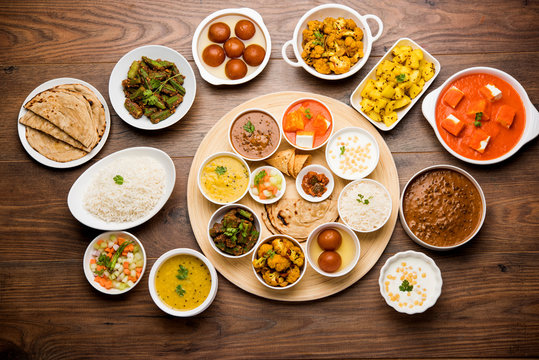Food Flavor: The Key to Delicious and Satisfying Meals
From the moment we wake up in the morning till the time we go to sleep at night, our sense of taste plays a big role in how we feel throughout the day. The flavor of our food can have a significant impact on our mood, energy levels and overall well-being. In this article, we will explore the science behind food flavor and how ingredient choices can enhance or diminish the sensory experience of eating.
What Creates Flavor?
Flavor is a combination of taste, aroma and texture working together to create the full flavor experience in our mouth. While taste buds on our tongue detect just five basic tastes – sweet, sour, salty, bitter and umami – it is our sense of smell that plays the biggest role in distinguishing thousands of flavors. Volatile aroma compounds are released from food as we chew and these travel up the throat and stimulate smell receptors in the nose. Texture also affects how we perceive flavor as different consistencies require varied chewing and release flavors at changing rates.
Flavor Compounds
Foods contain numerous natural chemical compounds that are responsible for their characteristic flavors. For example, sugars and acids are largely what give fruits their sweet and tangy tastes. Spices and seasonings like garlic, ginger and pepper derive flavors from sulfur-containing compounds called thiols and isothiocyanates. Meat and seafood flavors come from fats breaking down during cooking to form short-chain fatty acids and aldehydes. Understanding which ingredients contain potent aromatic compounds can help chefs craft nuanced and complex flavors in their dishes.
Enhancing Flavor Through Cooking Methods
Different cooking techniques extract and develop flavors in unique ways. Roasting, for instance, causes sugars and amino acids in foods to undergo caramelization and Maillard reactions, imbuing roasted meats and vegetables with rich, browned flavors. Simmering in liquid, such as making soups and stews, draws flavor molecules out of ingredients and into the cooking medium through diffusion. Grilling over high heat produces charring which generates aromatic heterocyclic amines and polycyclic aromatic hydrocarbons that contribute smoky grilled tastes. Careful manipulation of temperature, time and moisture during cooking allows chefs to optimize and balance flavors.
The Role of Herbs and Spices
While many foods possess their own intrinsic flavors, herbs and spices are arguably the most powerful tools that chefs have to shape, elevate and complement those flavors. Spices like cloves, cinnamon, nutmeg and allspice add warmth and complexity to dishes through aromatic essential oils. Fresh herbs, such as basil, parsley and cilantro, impart bright, verdant notes. Dried herbs and ground spices should be added judiciously early in the cooking process to allow their flavors to fully infuse into a dish over time. Used knowledgeably, herbs and spices can turn simple ingredients into complex, balanced and crave-worthy meals.
Salt and Acidity: Flavor Balancers
Perhaps the most critical components for achieving a coherent and satisfying overall flavor profile are salt and acidity. Adequate salt heightens and round out other flavors whereas insufficient salt leaves food tasting dull or flat. Acids like vinegar, lemon and wine add bright, mouthwatering notes that enliven flavors and cut through fattiness or richness. Carefully adjusting levels of salt and acidity through the creative use of sodium, acidulants and seasoning is key for flavor success across cuisines and dishes. Master chefs have an intuitive grasp of these fundamental flavor principles.
Flavor Combinations
There is an art to thoughtfully pairing and combining ingredients, herbs, spices and other elements so that their flavors synergize, rather than compete or clash. Traditional cuisine and contemporary culinary masters have mapped out time-tested combinations that work in harmony, like tomato and basil, peanut sauce and noodles, steak and roasted potatoes. However, through experimentation and understanding flavor science, innovative chefs also craft novel combinations that surprise and delight tasters’ palates. With a deft touch, carefully orchestrated flavor harmonies formed through layering and fusion of flavors can result in meals greater than the sum of their parts.
Molecular Gastronomy’s Role in Engineering Flavor
The burgeoning field of molecular gastronomy applies scientific principles and techniques to cooking, with an emphasis on understanding and manipulating food on a molecular level. Emerging culinary techniques enabled by this approach allow unprecedented precision and creativity in designing novel textures and flavor experiences. Methods such as spherification, foams, gels and emulsions grant chefs abilities like trapping and protecting volatile flavors, suspending oils and sauces, and controlling viscosity and eruption profiles to optimize gustatory pleasure. As our comprehension of flavor chemistry expands, expect molecular gastronomy to further reshape the future of culinary art.
While innate flavor awaits discovery within ingredients, an adept chef sculpts impressive cuisines by thoughtfully drawing out, layering, harmonizing and balancing innate tastes through cooking interventions and seasoning additions. As the ultimate arbiters of flavor success, our senses guide culinary progress towards optimized palatability and enjoyment. With continued study of flavor science, skillful application of techniques, and intuition honed over years, masters of flavor will keep pushing dining experiences to new heights through their command of this most important sensory aspect of food.
Note:
1. Source: Coherent Market Insights, Public sources, Desk research
2. We have leveraged AI tools to mine information and compile it




